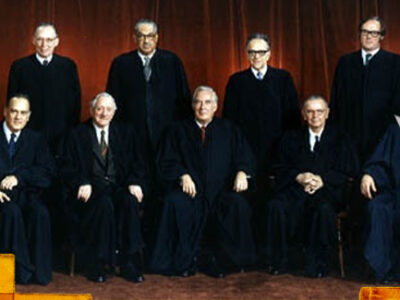More bad news for Republicans: As they licked their wounds after a crushing loss in the mid-term elections, another significant election defeat, south of the border, was confirmed: The citizens of Nicaragua have chosen former Sandinista Marxist dictator Daniel Ortega as their new democratically elected president. Ortega was Ronald Reagan’s nemesis—the man Reagan worked so hard to dislodge, most famously by arming the Contra rebels committed to overthrowing Ortega and his Sandinistas. It was truly an awful week for Republicans: even the icon of their party experienced a loss at the voting booth. But in response to the defeat, the eternal optimist would find a silver lining.
By the end of his presidency, Reagan had boasted that in the nearly 3,000 days of his administration “not one inch of ground” had fallen to Communists. This was indeed a stunning achievement: In the sixty-odd years prior to the Reagan presidency, the Soviet Union consistently advanced the frontiers of international Communism. One could walk through each decade since the 1910s and list groupings of countries that fell into the Soviet orbit or Marxist camp. The 1970s, the decade before Reagan came to power, had been one of the busiest for Communist expansion: during the 1974-79 Ford-Carter period, the Soviets picked up 11 proxy states in the Third World, including Nicaragua.
Reagan’s 1980s was the first decade to not only halt the advance but to dramatically reverse it, to implode it—a remarkable turnaround.
Among the regions where Marxists had made inroads, Reagan was acutely aware of the danger to Latin America—America’s backyard. He saw his fight against Communism in the region as consistent with his promotion of freedom, with Nicaragua most critical: “Our goal in Nicaragua must be to make democracy irreversible,” Reagan stated unambiguously. He was hopeful that “the freedom tide that has swept Latin America” would “push up against the borders of Nicaragua.” That tide, he warned in 1988, could “go either way.”
The tide went Reagan’s way, as Ortega and the Sandinistas in 1990 agreed to hold a free election, lost, and stepped down. The tide kept going, rolling through Eastern Europe and even into Russia, where in June 1991 Boris Yeltsin won the first-ever democratic election in that country. At the end of 1991, Mikhail Gorbachev resigned as head of the USSR, and thus resigned the Soviet Union itself.
Yet, the “March of Freedom,” as Reagan had called it in his June 1982 Westminster address, was just beginning. By the end of 1992, there were 99 democracies in the world, by 1993 there were 108, and by 1994 the total was up to 114, a doubling since Reagan entered the Oval Office; in 1980, there had been only 56 democracies. By 1994, 60% of the world’s nations were democracies, compared to less than 30% in the mid 1970s. In the time that Reagan shifted from president-elect to ex-president, the number of democracies increased from less than a third to a strong majority.
That brings us to today: Nicaragua is still a democracy, but one that has now elected Daniel Ortega as its leader. Would Reagan be disappointed?
Yes, of course, especially on the heels of Communist Hugo Chavez’s ascendancy in Venezuela. On the other hand, Reagan was the eternal optimist. He would probably underscore three key facts:
First, Ortega insists he is no longer a Marxist and has pledged to continue free trade and other market policies. He cooperates with erstwhile political opponents. Reagan himself witnessed a political transformation in Mikhail Gorbachev, a committed Leninist who eventually introduced political pluralism, civil liberties—including religious freedom—and some key market freedoms in the Evil Empire. In the case of Ortega, Reagan might invoke the Spanish equivalent of dovorey no provorey, a favorite Russian phrase adopted by Reagan, which meant “trust but verify.” He would be highly suspicious of Ortega, who, if no longer a Marxist, is as corrupt as ever.
More important, however, Reagan would note that we now live in a different world in which there is no longer a Soviet Motherland serving as the headquarters for a Comintern seeking global Communism, or, as Reagan put it for some 50 years, “a one-world Marxist state.” As a result, a closet Marxist in Nicaragua in no way poses the hazard he did in 1979. The Cold War is over.
Reagan would further note that international Communism—the great battle of the last century—has been replaced by radical Islamic fundamentalism, the enemy of the new century. And there, Reagan might remain hopeful that George W. Bush’s embattled struggle to extend the March of Freedom into the Middle East—Bush explicitly invokes this Reagan goal, citing the Westminster address—would bear fruit. The eternal optimist would have been impressed by the stunning series of free elections in Afghanistan and Iraq, which he would have seen as vindication of his belief that “all people” (as he said in Westminster) should be “free to determine their own destiny.”
Time will tell what happens to Nicaragua. For now, however, the most important thing to remember is this: Because the Cold War and USSR are history, Daniel Ortega’s Nicaragua, though certainly not unimportant, is not the grave threat it once was. Ronald Reagan would be the first to acknowledge that reality with a wink and a grin.




